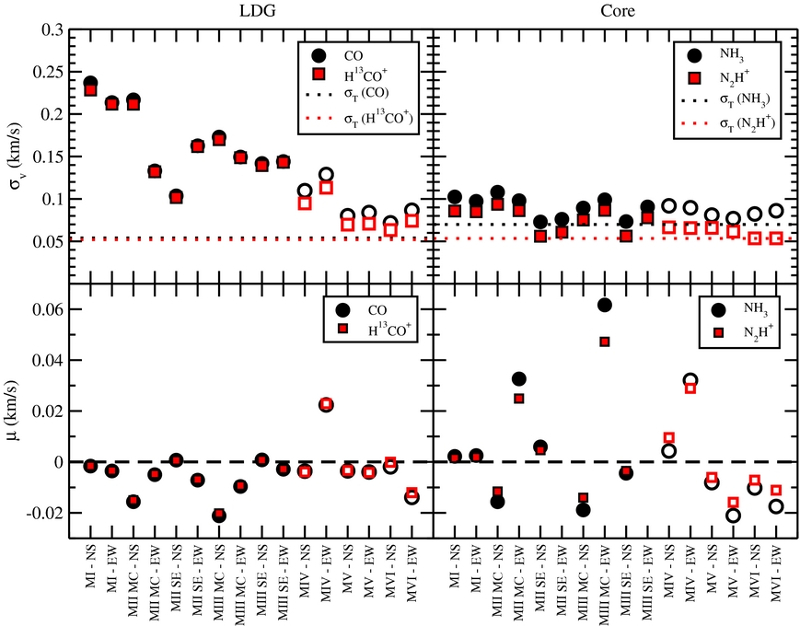| EPoS Contribution |
|
Fragmentation and Kinematics in Partially Ionised Magnetised Molecular Clouds
Nicole Bailey MPE, Garching, DE | |
| We analyse the effect of an ionisation profile on the fragmentation, velocity structures, kinematics, and synthetic spectra within a simulated magnetised star forming region. We consider two ionisation profiles, step-like (SL) which assumes a high ionisation fraction due to UV radiation at low densities and low ionisation fraction due to cosmic rays (CR) at high densities. Clump regions are found to occur at the convergence of two flows with a low velocity region and velocity direction transition occurring at the junction. Models with evident substructure show that core formation occurs on the periphery of these velocity valleys. Our analysis of synthetic spectra reveal the presence of large non-thermal components within low-density gas, especially for models with a step-like ionisation profile. All cores show small, sub-thermal relative motions compared to background gas. Comparison of velocities resulting from different ionisation profiles suggest that high ionisation fractions yield supersonic velocities, up to two times the sound speed, while regions with low ionisation fractions tend to be subsonic or mildly supersonic. This suggests that the observed transition to coherence within cores could be a transition between high and low ionisation fractions within the gas. Recent work on the importance of turbulence in the dynamical evolution of magnetised clouds with either SL or CR-only ionisation profiles will also be presented. | |
 | |
| Caption: Resulting fitting parameters for Gaussian fits of synthetic spectra for neutral particles and ions for all models and lines of sight (North-South (NW) or East-West (EW). Symbols depict values for the assumed low-density gas (LDG) or core tracers as indicated by the legends. The solid symbols depict models with the step-like ionisation profile, while open symbols depict models with the CR-only ionisation profile. The LDG includes gas within the visual extinction range 2 mag < AV < 7 mag, while core gas includes gas with AV > 7 mag. Top panels: velocity dispersion (σv). Bottom panels: centroid velocity (mu). The black and red dotted lines indicate the thermal variance (σT) for each respective molecule assuming a temperature of 10 K. The dashed line shows μ = 0 for visual reference. | |
| Collaborators: S. Basu, UWO, CA P. Caselli, MPE, DE |
Key publication
Suggested Session: Fragmentation |

